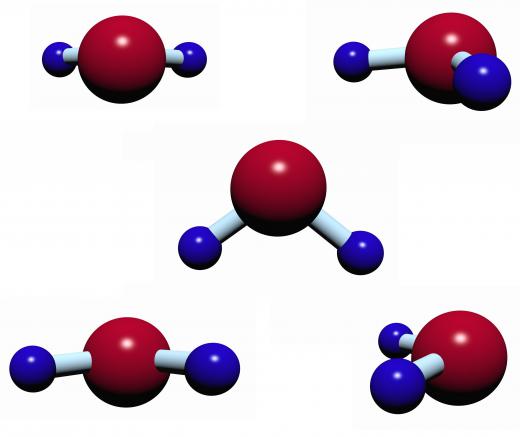What Is Ostwald Ripening?
Ostwald ripening is an effect that occurs in crystals and some liquid mixtures; this happens when larger crystals or liquid droplets form while smaller ones disappear. The effect is caused by differences in the molecular energy of larger versus smaller crystals or drops. Larger structures have a lower energy because the center of the droplet or crystal has a stable molecular arrangement, not likely to come apart, while only the outer surface is available to form a larger crystal or droplet. Smaller sizes are less stable because the outer surface, though small, is likely to connect or merge with other molecules.
The changes that occur with Ostwald ripening were first defined by W. Ostwald in the late 19th century. Initial research found some materials formed crystals that became rougher or more coarse over time. Ostwald developed the theory of changing crystal size over time, which was later confirmed with laboratory experimentation. Ripening is rarely seen with the eye, but can be determined by laboratory equipment that can measure crystal or droplet sizes.

Examples of Ostwald ripening can occur in common consumer products. Ice cream is one example; Ostwald ripening occurs when ice crystals form in ice cream after it is kept in a freezer. This makes the ice cream feel rough, known as poor mouth feel in the food industry. The crystals are formed because the finely mixed water molecules have an unstable molecular energy, and they want to connect with other water molecules. Over time more and more ice crystals will form and make the product less desirable to eat.
Some emulsions, which are combinations of two or more liquids that do not chemically react or mix, can change properties over time due to Ostwald ripening. Examples of emulsions include mayonnaise, skin creams and many liquid cosmetics. On a larger scale, this effect can be seen if oil is poured into a pan of water. Initially, the oil droplets can be quite small, but over time larger droplets will form while smaller ones disappear.
Surfactants can be used in any process where Ostwald ripening needs to be avoided or reduced. These chemicals do not react with any of the mixture ingredients, but rather form molecules that surround one of the mixture components. This surfactant coating disrupts or stops the process of small drops or crystals merging into larger ones, and results in ice cream that stays creamy, or cosmetics that do not develop a grainy texture.
Photographic processing uses chemical reactions to form silver molecules that react to light, resulting in a visible image or picture. Photo printing has become automated since the late 20th century for consumer photographs, but most processing relies on the silver chemical process. Ostwald ripening can affect picture quality by changing the size of silver crystals after they are deposited on photo paper. Steps are included in print developing to stop these effects, which results in a very small crystal size and better print quality.
AS FEATURED ON:
AS FEATURED ON:











Discuss this Article
Post your comments